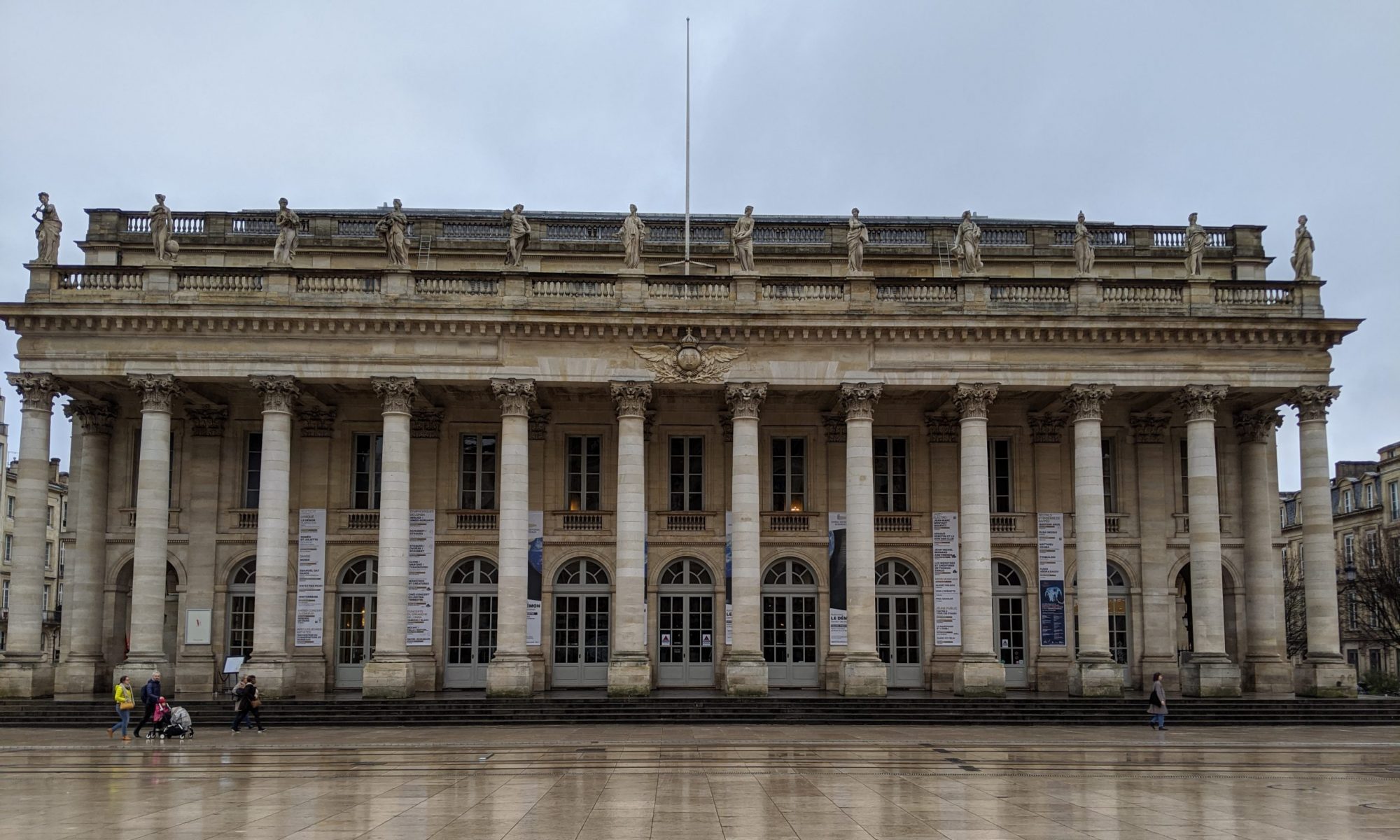There are only 24 hours in a day («On peut pas être au four et au moulin»), and it turns out that every hour I spend writing about my French activities is an hour I don’t spend on doing those activities. Here’s a collection of brief items about French activities I’ve enjoyed recently but haven’t made time to write up until now.
Chagall: Scandale à l’Opéra de Paris
In a recent French lesson I was assigned to watch the short video named «Chagall: Scandale à l’Opéra de Paris». In 1962, artist Marc Chagall was commissioned to create a new painting on the ceiling of the Palais Garnier opera house. I first visited this building in 2013 and absolutely adored it. The main amphitheater is spacious and restful, and the grand staircase in the entryway is stunning. The Chagall ceiling is OK too.
Fred Vargas: Les Evangélistes
Fred Vargas is a well-known French author of detective novels (polar or rompol). She’s been writing since the mid-1980’s and continues to publish new works (I think Quand sort la recluse (2017) is her most recent work). I first came upon her work in 2013 in a Paris bookstore and like it enough to stock up on a bunch of her books that have sat on my shelf unread. When I finished Pietr-le-Letton I needed a next read, and my daughter randomly pulled Vargas’s Sans feu ni lieu from the shelf. It was super accessible (a big change from the Simenon), and I read it in just 10 days or so. It turns out that it’s the final book in a short trilogy, though they are really only loosely linked. So I went back and read the first book Debout les morts, and am now a couple chapters into the middle book, Un peu plus loin sur la droite. For some reason, the first and second books of the series are harder for me to read than the third: maybe her writing style changed, or something else is at work.
The common thread is a household of three historians and an ex-police officer. The historians are named Matthias, Marcus, and Lucien, and the officer christens them St. Matthieu, St. Mark, and St. Luke, or “the evangelists”. In the first book, these four are the primary protagonists and detectives. In the final book, the detective is Louis Kehlweiler, another former police detective who knows evangelists, who themselves appear only briefly. The start of Un plus loin features Kehlweiler again, so I’m expecting the historians will be scarce again. We’ll see.
Mots Fléchés
I enjoy crossword puzzles and am reasonably skilled at them in English. The New York Times daily puzzle only gets interesting for me on Thursday or so. I figured that French crossword puzzles would be a good way to exercise my brain and build vocabulary. That may be true (though crossword puzzle words are their own odd sub-domain), but I completely underestimated how much command of the language is required to do this task. En français, je suis nul en mots fléchés!
The kind of puzzles I’ve been working on are called «mots fléchés». They look something like this
They come rated in levels 0-7. Level 4 is completely beyond me. I took me months to get past level 0, and I’m now working my way through the booklet shown above, labeled level 1-2, which I picked up in a news kiosk in Bordeaux. I feel like I’m about at the point where it is transitioning from level 1 to level 2, and boy am I struggling. In the heart of level 1 I was was able to get through one or two per night reliably without a dictionary, but it would take me well over an hour. Now I’m at an hour or two to get 75% of a puzzle completed. Here’s my current grid:

The answers are all in the back of the booklet, so I’m only as stuck as I let myself be. Often the problem is not that I don’t can’t think of a word to match the clue, but that I just don’t know what the word in the clue means. Here, I think I know what the clue words mean, but perhaps not all the solution words. My knowledge of gourdes is limited, even in English.
You can find lots of print puzzles like this at https://www.megastar.fr/fleches. If you click into each offering, each title offers a sample puzzle you can download like this, this, or this. They also sell printed booklets individually or by annual subscription. Six issues cost 25€, plus an additional 15€ for mailing to the US. I have enough supply to last me a while, so haven’t tried this yet. You can also play online with, for example, daily new grids at a variety of difficulties from the site Notre temps.
Les Hérietier
The French Cultural Center runs a film club that meets monthly to discuss in French films. I had hoped to attend the September session, which featured the 2014 film Les Heritiers. Not sure how they typically run things when not in the midst of a pandemic, but for this session we were asked to watch the film on our own in advance, then come prepared to discuss it in French. I watched the first 40 minutes of it before learning the Center had to reschedule the meeting for some reason or other. I couldn’t make the new time, so there was no longer any pressure for me to finish the film on time. That was a week ago, not sure if I’ll get back to it. I only understood 2/3 of the dialogue, and I didn’t find it all that engaging.


















